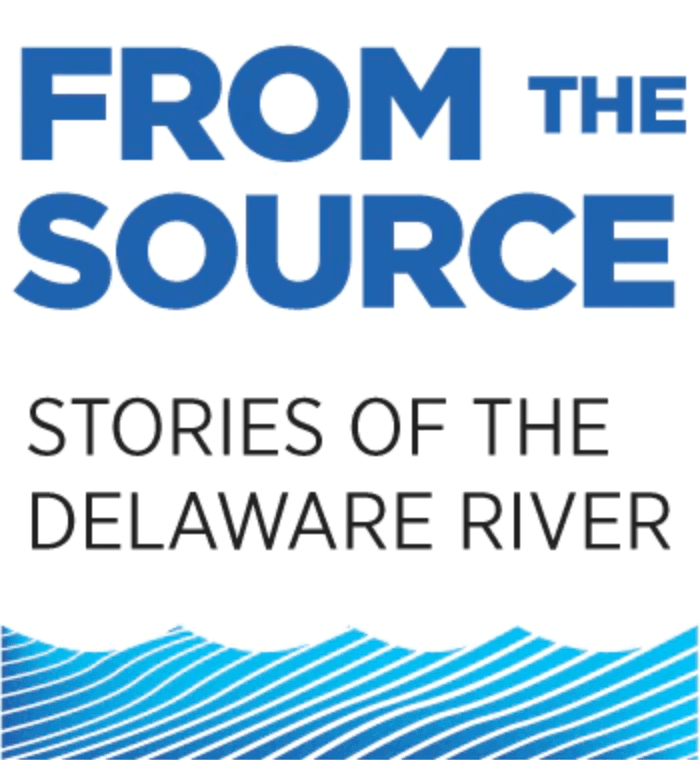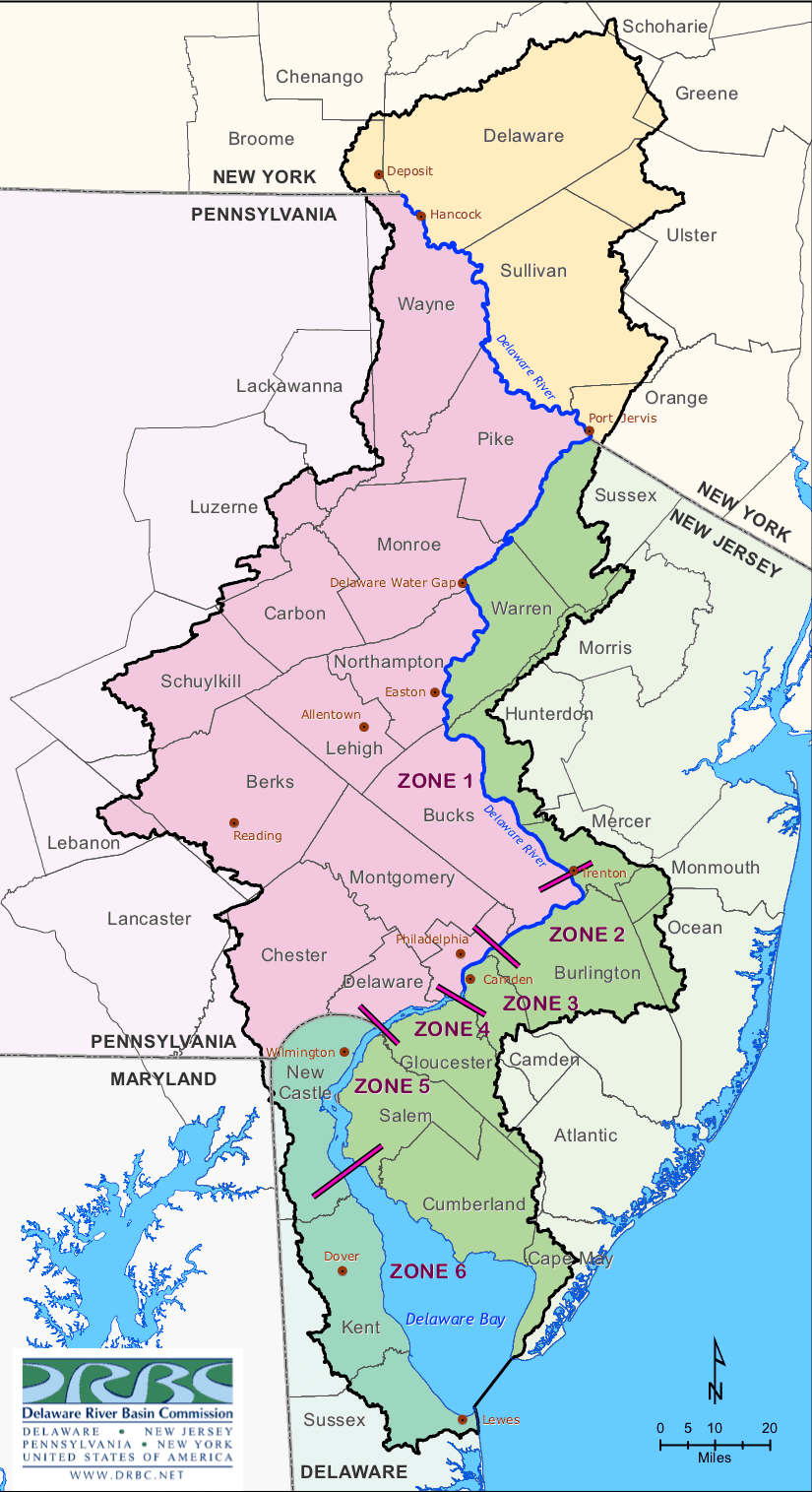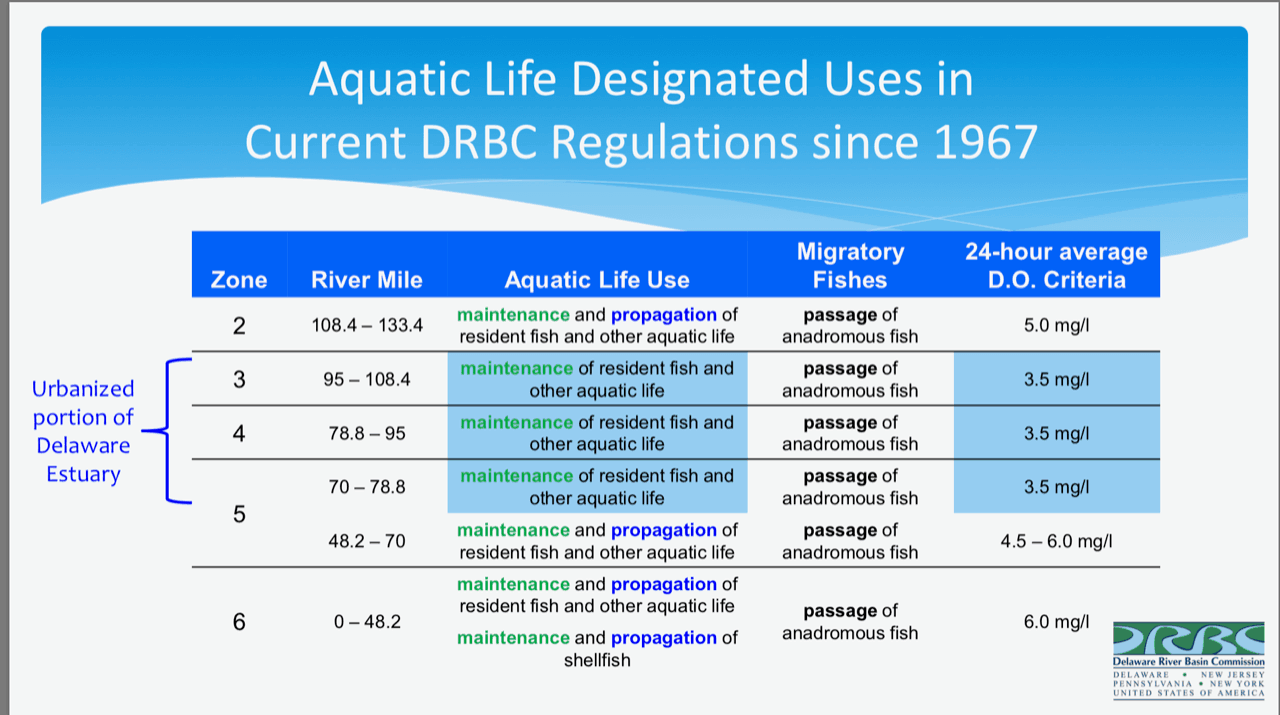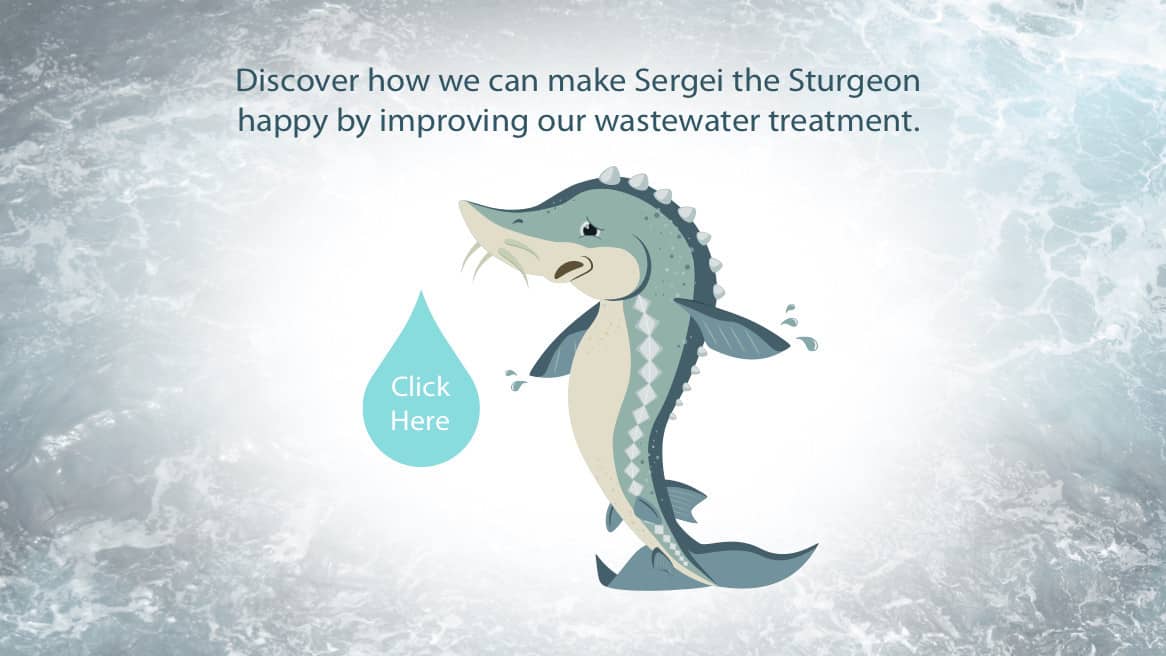Clean water? Mind your pees and carbons!
First in a series: dissolved oxygen and the Atlantic sturgeon
When people find out about Delaware Currents, they often ask me: Is the river clean?
My stock answer is: Cleaner than it's been for a long while!
But the river's story is much more than whether it's clean or dirty. Our water needs to be far more than clean. A healthy river is a dynamic ecosystem that provides, of course, the drinking water that we depend on, but also, a healthy habitat for all the river's critters that depend on it as well.
This story is about the next challenge to keep the river as healthy as possible for all of us.
Comes a time, you gotta own your own s**t.
Or, in the case of cleaner water for fish and us, owning your own pee.
Forgive the language, but some facts are better bluntly phrased.
Despite our very valid concerns about some multi-syllabic toxic chemicals, like PCBs or PFAS, which find their way into our water, sometimes we need to be just as concerned about the simple stuff.
Mostly, our excreta can be made safe using natural processes, with some helping bugs -- actually microbes -- that make the process go faster. (Here's a look at a simple wastewater treatment system in Hancock, N.Y., way up north on the Delaware.)
But the more we "produce," the greater the demand on those processes, which are carried out by a legion of wastewater treatment plants in the Delaware River basin.
Although we're focusing on our excreta for this story, remember that there is other stuff, like detergents, soaps and pharmaceuticals, which go down our drains. For some water-treatment systems, industrial discharges of infinite variety are added to the mix -- though usually those discharges are pre-treated on the industrial sites before that effluent goes into the sewer system.
Imagine our water system like a giant Archimedes screw, we take water in, treat it, use it, treat it again, and release it for more people to use downriver. About half of the 14 million users of Delaware River water are in fact dwellers outside of our watershed in New York City, in some municipalities north of the city and in New Jersey. But there are some 7 million-plus who are in the watershed, and all of us use and re-use the river's waters. (Just as we use and re-use the finite supply of water on the planet.)
Most people don't realize that on an average day, up to 65 percent of the water in the tidal Delaware River can be treated wastewater.
Now, don't get nervous, the wastewater that gets put back into the river undergoes constant and rigorous testing by the various municipalities and industries that use the water. In addition, each state has oversight of those plants, as does the federal government via the Environmental Protection Agency and the Clean Water Act.
So, too, does the Delaware River Basin Commission whose mandate -- given by the four border states (New York, New Jersey, Pennsylvania and Delaware) and the federal government -- is to manage both the quality and the quantity of water in the river.

Focus shifts from poo to pee
The process of wastewater treatment has for the past 50 years focused on the poop we produce, AKA all the carbon elements that go down the drain. And that process has given us increasingly cleaner water, and cleaned up what once was a noxious river.
It's been realized for all that time, that our pee -- nitrogen molecules like ammonia and ammonium -- presents its own set of problems but those issues weren't as great and were given a pass, especially because those problems were taken care of when the ammonia and related molecules hit the river:
Those molecules are consumed/transformed by similar "bugs" as those we have in our wastewater treatment plants. They change ammonia (a not-great thing) into what are called more stable forms of nitrogen, and so there's less toxicity in the water. That's a process called nitrification, brought to us by nitrifying bacteria.
Here's a little dose of water chemistry for you. There's lots more but this is what it looks like simplified:
Chemically the process looks like this: NH3 (ammonia) → NO2 (Nitrogen Dioxide) (nitrite) → NO3 (nitrate)
But, the nitrification process that is occurring naturally in the river means that the ammonia processing is "stealing" oxygen. You can see that in those simple formulas above -- the addition of the "O" (oxygen) has to come from somewhere and it comes from the river. (Remember high school chemistry? Water is H2O.) On a large scale you can get an area of the river where oxygen is depleted to the point where fish, especially juveniles, can't thrive.
In the worst cases, this can create dead zones in the river. Luckily we're not experiencing those (though we did in the bad old days!)
For the past 50 years, the river has been on a continuous path of improvement with a sustained focus on dissolved oxygen as a measure of how healthy the river is and not just for fish.
Have a look at the following graphic, which charts the dissolved oxygen since the 1960s at a site prone to oxygen depletion in Philadelphia:

But those areas of less oxygen -- called an oxygen sag -- are creating hazards for fish, especially young fish.

Sturgeon -- canaries in the river
That spotlight has increased in intensity because of the return to our river of an endangered species of fish, the Atlantic sturgeon. (More about sturgeon here.) Mostly that's a cause for celebration because once upon a time the river was so polluted, the sturgeon "traffic" was halted by a giant oxygen dead zone in the river, like a dam that blocked all sorts of fish going up or down the river.
Think of the predicament of the fish as if they were guests in the "Hotel California," that hit song by The Eagles:
"You can check-out any time you like,
But you can never leave! "
OK, it's more complicated than that (of course)...it's likely that the adult sturgeon could come up the river when the oxygen supply is pretty good. or at least it's possible. The bad oxygen supply is mostly a summertime event. But it would be hard for the young of species to swim back down when it was time for them to move from the spawning grounds because that would be in the summer, when that sag is present.
The celebration over sturgeon is somewhat muted because the Clean Water Act demands that once the young of an endangered species are discovered in sufficient numbers, the water has to be clean enough to support them. The young of sturgeon cannot thrive where there isn't an ample supply of oxygen in the water. (Remember fish need oxygen as much as we do. They don't get it the same way we do: not from the air, but from the water they swim in.)
Well, the young have been "discovered" in significant numbers and have been for several years, and simply put, there are important areas of the river that can't support that life as strongly as possible because of the oxygen depletion caused by, yep, our pee, among other sources of ammonia.
Note, too, the oxygen "sag" doesn't mean the water is dirty, just not good for sensitive younger fish. Also, the sag is not there year-round, only in the warmer months, right around the time when the fish are spawning.
Which, in turn, means that the "pee" problem -- let's call it an ammonia problem -- which has been on the back burner for all these years is now front and center.
One of the biggest reasons the ammonia problem hasn't been addressed already is that processing ammonia out of the waste stream is more difficult than processing the carbons.
If the waste stays in the treatment system for longer and there's a healthy population of nitrifying bacteria (yep those good bugs), and the right amount of oxygen in the air that can feed into the process and the right temperature, nitrification can take place in the system and the river doesn't have to "give up" oxygen. The process can be completed before the treated wastewater hits the river. But most wastewater systems aren't built for nitrification to occur, especially older ones.
So, the DRBC is tackling the issue with typical DRBC speed: slowly.
Full (slow) steam ahead
After recognizing the issue and studying it for a number of years, the DRBC commissioners (remember, though the governors are hardly ever present at the meetings, the four governors with a representative of the federal government ARE the commissioners) finally voted for an intensive modeling of the tidal river and bay that would yield a very precise understanding of the problem.
The modeling and rulemaking process is planned to take six years from the 2017 start date, with the modeling report (and wasteload allocations determined) planned to be done in 2021 and implementation sometime after that.
That's a long time, especially when you take into consideration that the problem has been known about, depending on who you talk to, for more than a decade. (There are "sides" to this issue, as you will shortly read.)
The dissolved oxygen problem is affected by many variables: tides, of course, washing in and out; salinity, water from the ocean is saltier than the fresh water coming down from the river north of Trenton as well as from the other main tributary, the Schuykill; the temperature of the water; how much light reaches how deeply into the river; how much water is in the river -- lots of rain versus less, to name but a few. Then there is the added complexity that these variables might also be affected by where in the river they are pinpointed. It's not just on the surface, but the model has to represent layers of the river in order to understand when and where as well as why the problem waxes and wanes.
Modeling is a great idea, agrees the Delaware Riverkeeper, Maya van Rossum: "Good science should inform the work we do to support a healthier environment."
But she is angry at the slow pace of the DRBC's actions on this issue. Really angry.
"It's immoral and unethical for us to be behaving in ways that result in a loss of this genetically unique line of species," she said, referring to the American sturgeon in the Delaware.
There have been a number of studies on this issue, some by the DRBC, and a common understanding for quite a while in the environmental and scientific community that the problem needed to be addressed.
Dr. Dewayne Fox, fisheries professor at Delaware State University and an expert on the Delaware's sturgeon said in an e-mail:
"There has undoubtedly been a loss of genetic diversity. Do I think we will completely lose Atlantic sturgeon in my lifetime? No, but I do think when you look at the loss of our unique genetic strain (haplotype) that this is possible."
Dr. Fox said that prior to the start of the sturgeon-fishing industry, the best estimate for the total population (in about 1890) was 180K.
"Our annual run size estimates now are all below 300 spawning adults," Fox said, and also noted that this number is an estimate that has not gone through peer review.
Van Rossum is, "tremendously disappointed in the DRBC. They have known about the plight of this species for more than a decade -- dating back as far as a 1980s report," she said, adding the DRBC even needed a push to get this far.
"Eventually we -- the Delaware Riverkeeper Network -- petitioned for the DRBC to force compliance with the Clean Water Act and recognize that there was a new existing use of the Delaware when it comes to fish."
That petition was in 2013, and the Riverkeeper Network was joined by the Delaware River Shad Fishermen’s Association and the Lehigh River Stocking Association, Inc.
The study -- and the modeling -- of the river's dissolved oxygen problem is carried out by the DRBC's Water Quality Advisory Committee, which makes recommendations on policy to the commissioners, who then vote, or not, on the recommended policy. Members of that committee are drawn from the four states, academia, environmental organizations (van Rossum is on the committee), the U.S. Environmental Protection Agency, the National Park Service and a local watershed organization.
At the Water Quality Advisory Committee meeting of January 28, 2016, there was a continuation of a lively debate about water quality and specifically about dissolved oxygen that had been ongoing for several meetings.
A very complicated vote was taken to find out what this committee would recommend to the commissioners, with members able to cast two votes on eight different proposals.
Six members voted with van Rossum's plan, making that the recommendation of the committee. The members agreeing with Van Rossum's sense of urgency were: Evelyn MacKnight, EPA Region III; John Jackson, Stroud Water Research Center; David Wolanski, Delaware Department of Natural Resources and Environmental Control; Allan Ambler, National Park Service; Tom Barron, Pennsylvania's Department of Environmental Protection; Abigail Pattishall, Wildlands Conservancy.
Those minutes (and the votes) are here.
The response from the commissioners was not to accept the committee's proposal but rather to institute the development of a model of the bay.
That resolution from 2017 is here.
"We finally get to the place where the DRBC admits there was a problem but rather than recognize that need, DRBC kowtows to the industry," van Rossum said. The industry she's referring to is the wastewater treatment industry -- and those are largely municipal treatment plants run by cities like Philadelphia and Wilmington, for the benefit of its citizens.
"They (the DRBC) kicked the can down the road," van Rossum said.
Well, maybe? Both plans had about a five-year window for completion. The plan from the committee had action before more research and investigation, possibly because committee members thought enough of that had already taken place.
But it's no bad thing that the model is as accurate as possible. It will form the basis of what the ammonia allocation for wastewater treatment plants will be in the near as well as the distant future.
For van Rossum, the modeling -- good in itself -- is a stalling tactic.
She contends that a new oxygen standard should be applied to the river immediately, and that the wastewater treatment plants should get on board, ASAP, by implementing changes to the wastewater that they're emptying into the river.
Standards on a sliding scale
Hold on. Oxygen standard? There are standards? Oh yes, indeed. Those standards are how we got the river so much cleaner in the past 50 years. Standards were implemented and the wastewater treatment plants had to figure out how to meet them, with some financial help from the federal government, as well as the relevant states -- wastewater treatment plants are an expensive commodity.
But not all areas of the Delaware River (or really any water body) have the same standards. Where there is denser population or more industry, those areas have a lower standard, or goal, reflecting the different realities on the ground, as it were. The DRBC has divided the river into zones that reflect this. By the way, all the colored areas together form the Delaware River watershed.

Now, the table below will make some sense:

Look to the far right first. You'll see a "24-hour average DO criteria." See how it varies up and down according to the zone? South of Trenton, the population increases as does industry so the DO average drops from 5.0 mg/l (milligrams per liter) down to 3.5 mg/l in zones in Zones 3, 4 and 5. In Zone 6, the broad bay, with less population, and all that ocean water, the criteria rises again to 6.0 mg/l.
The oxygen levels in Zones 3, 4, and 5 can drop below that standard, especially in summertime. That's the sag. It happens every year, but gets more dangerously low every three years or so. Another important wrinkle: The sag is getting less low over time.
Now, take a look at the "Aquatic Life Uses" column, that's Clean Water Act terminology. The stated designated use help define what standards should be upheld. You'll see that in Zones 2 and 6, it's maintenance and propagation. In Zones 3, 4 and 5, it's only maintenance. To be clear, maintenance means, basically, keeping adults alive. Propagation means not just spawning but rearing the young.
Under the Clean Water Act, states are required to raise the standards on any water body at least to what is called "an existing use." In this case, the studies done by the DRBC and others have found that there are sturgeon in the river, and there are young of that species as well, so the law requires a standard of oxygen that supports that use.
For our sturgeon, that "reality on the ground" is that we now have "propagation" as an existing use, which is not reflected in the table's narrative for Zones 3, 4, and 5. You can see that "propagation" is a use in other zones.
Van Rossum wants the standard for dissolved oxygen to be raised to 6.5 mg/l and the designated use to include propagation.
The proposal that was carried by the majority vote in the Water Quality Advisory Committee agreed with the second, not the first. The vote agreed to a designated use to include propagation but a DO criteria of 5.5 mg/l (5-day average.)
From the DRBC's testing and analysis, 97.2% of the time dissolved oxygen is above 5 mg/l at the Ben Franklin Bridge.
Clearly, we're close.
One of the voices missing from this story is that of the EPA. That agency is the one charged with enforcing the regulations of the Clean Water Act and could be expected to weigh in. Despite several attempts to find out what they think of the dissolved oxygen situation now in the Delaware, there has been no response, though MacKnight's vote on the Water Quality Advisory Committee in 2016 sided with the recommendation for some quick action.
The DRBC held a public hearing on its proposal to model the bay, on April 6, 2017. The DRBC is pretty transparent in how it follows the rules, though often why the commissioners take the position they do is less clear.
It has public hearings on almost all its decisions, but some of those decisions can run counter to what its advisory committee has recommended.
Many people spoke at that hearing to express their concern at the slow pace of change that the modeling approach would necessitate. One of them, Tom Shervinski, chief of Pennsylvania's Watershed Analysis Section of the state's Fish and Boat Commission, submitted five pages of testimony summing up years-long study of fish, including the Atlantic sturgeon and the short-nosed sturgeon. He asked that the DRBC "contract the proposed six-year timeline." He pointed out that the data "supports the inclusion of propagation and a designated use in Zone 3 and 4 and the upper portion of Zone 5 as soon as administratively possible."
The important point of this back and forth for the DRBC is, as DRBC Executive Director Steve Tambini noted, that there was an unanimous vote from the four states (not the U.S.A.C.E.) Unanimity is almost always hard-won for the DRBC. "At the end of the day," he said, "we have four states agreeing on the way forward."
Costs vs. benefits
Changing standards is a really big deal, and would require in most cases some changes in how the wastewater is treated, a costly prospect. The DRBC contends that promulgating a new standard now and a revision of that standard later as a result of improved knowledge from the modeling effort would be unfair, and perhaps a doubling of the expense for these municipal treatment plants.
And further, a one-size-fits-all approach could yield dissension and possibly lawsuits from the wastewater treatment plants and endless arguments from them pushing back to "prove" that a specific plant shouldn't be forced to do a specific "fix" for what no one has proved is broken. They might agree that it's broken overall, just not 'their" plant.
Getting results quickly is of prime importance to the Delaware Riverkeeper, who argues for an emergency rescue for an endangered species .
"There's tremendous concern in the scientific community that the Delaware River population is not successful," Van Rossum said. "Other waterways that have taken steps to protect them -- in the Hudson River and in Chesapeake, are doing better."
John Yagacic, DRBC's manager of Water Quality Assessment and its representative for the Water Quality Advisory Committee, supports a different approach.
"We have a long way to go yet," said Yagacic. "We need to convey what we don't know: What are the limits? What is the set up of operation, what treatment processes will remedy the problem?
"We're in the middle of it right now."
Importantly, his end goal is not much different than Van Rossum's:
"I want to see the actual DO in the river improve," he said. "We need to find out what is appropriate and deliverable."
***********
Thanks to many people for their patience with my endless questions! Don't blame them if I didn't get it right! (But let me know!)
Namsoo Suk and John Yagecic from the Delaware River Basin Commission; Maya van Rossum and Erik Silldorff from the Delaware Riverkeeper Network; Angela Padeletti from the Partnership for the Delaware Estuary; John Jackson from Stroud Water Research Center; David Velinsky from Drexel University; David Wolansky from Delaware Department of Natural Resources and Environmental Control; Dr. Dewayne Fox from Delaware State University
Special thanks to my Environmental Leadership Program colleague, Christina Catanese who connected me with Celia Helfrich. Celia patiently created and re-created the delightful graphic illustrations as my understanding of the problem deepened. Thank you !
There's a part 2 -- and more -- in a couple of weeks: the problem and solutions from the point of view of the wastewater treatment plants.





